![]()
I’m not just a camera history nerd, I’m also a huge fan of weird things in general. Weird and unique technology is especially fascinating, and I’m sure many readers here share the same sentiment.
Thankfully there have been a lot of unusual cameras produced over the past decades. While you could write almost endlessly about them, I’ve chosen nine unique digital cameras that fascinate me for one reason or another.
At a Glance
Leica S1 (1996)
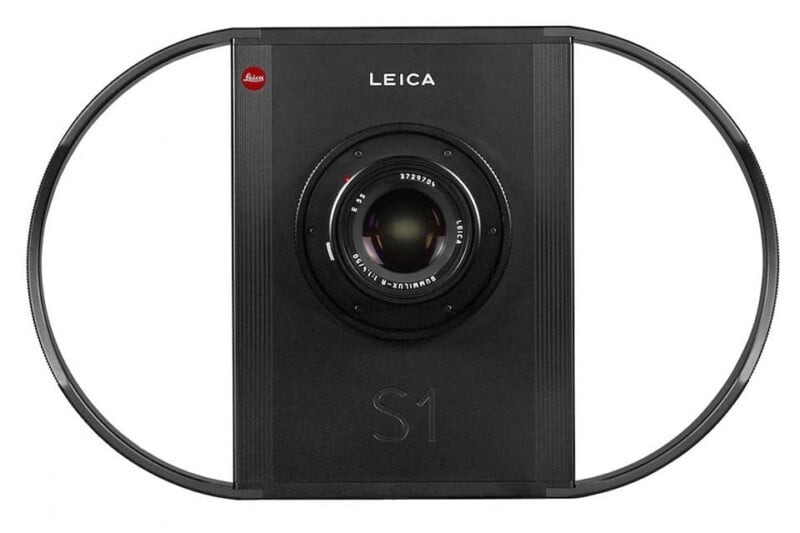
If you’ve heard of the Leica S medium format cameras, have you ever wondered why there was a Leica S2, followed by the more recently released Leica S3, but they did not seem to have a Leica S1? The answer is: they did. But most people have never heard about it, both because it is extremely rare and also because it was released in 1996 — basically at the genesis of the digital uprising. The Leica S2 was not released until twelve years later, at which point digital photography was the industry standard.
Unveiled at Photokina in 1996 and available to the public near the end of 1997, the Leica S1 made headlines for two primary reasons: its 26.4-megapixel resolution and its medium format sensor. To put that in perspective, it was not until the 31.6-megapixel Phase One P30 was released in 2004 that the S1’s resolution was surpassed. There were medium format backs with higher resolution prior to the S1, but they were only for 4×5 large format bodies. Even after the Phase One P30 was released, the Leica S1 still had the distinction of being the highest resolution fully integrated camera ever made until the Leica S2 was released.
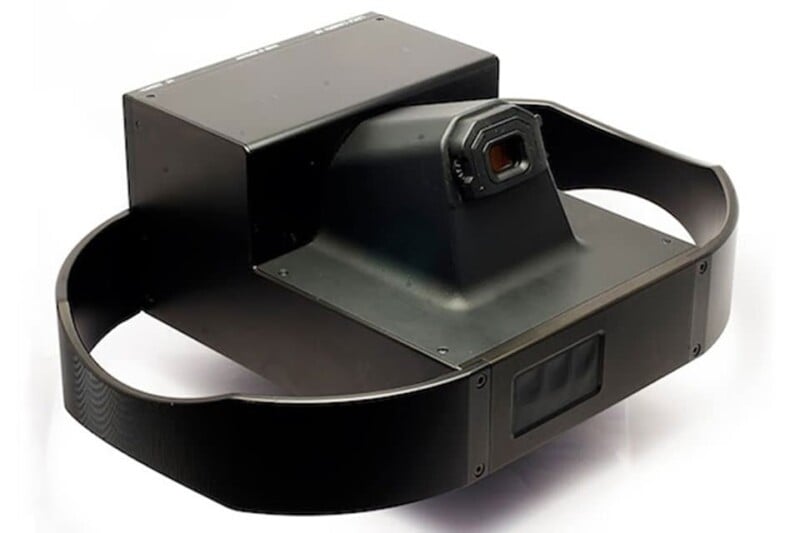
The S1’s medium format sensor was an odd 36×36 size — meaning it was 50% larger than full-frame spatially but only 17.7% diagonally, and both would produce the same horizontal field of view. Since it was a scanning camera, it took over three minutes to read out the entire sensor.
Its image quality was absolutely stunning for its time. It housed a triple-linear CCD sensor with a base ISO of 50 and was highly regarded for its excellent color reproduction. Since it used a scanning sensor — and thus required no interpolation — it could capture full RGB color information at every photosite. The resulting 48-bit files clocked in at an enormous 150MB. Not only is that a hefty file nearly 30 years later, but it’s also worth noting that the average home computer in 1996 only had a hard drive capacity of around 1,000MB (1GB).
With its low 50 base ISO, true RGB 48-bit files, massive 26.4MP resolution, large sensor, and about 11 stops of dynamic range, it was capable of results completely unheard of in 1996.
To top off the list of unique specifications, the camera had a user-interchangeable lens mount. Options included Leica R and M, Canon FD, Contax C/Y, Minolta MD, Nikon F, Olympus OM, and Pentax K — basically every mainstream 35mm lens mount ever made. Because the sensor’s horizontal measurement was identical to 35mm film and the diagonal was not significantly larger, the image circle of most 35mm lenses could cover its 36x36mm sensor.
Only 1,500 were ever produced, but according to most accounts, a mere 150 of those were sold.
Fujifilm FinePix S Pro Series (2000-2006)
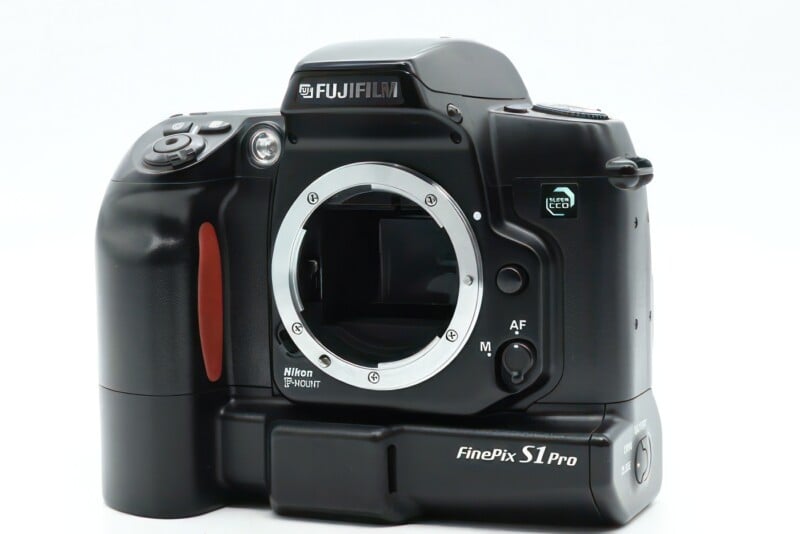
In 2000, Fujifilm launched the first camera in its professional digital camera line, the FinePix S1 Pro. Nothing about this camera or its successors is outwardly strange. The S1 Pro was based on a Nikon F60 (aka N60) film camera body with some modifications by Fujifilm to include a rear LCD screen and a large battery compartment. I actually did a retrospective review of the S1 Pro a couple of years ago. Hopefully, I will get around to doing the same for the S3 and S5 Pro, which I also own.
What’s unique about these cameras are the sensors housed inside, designed with some incredibly unique technology that Fujifilm dubbed “Super CCD.”
Inside the S1 Pro was a 3.1-megapixel APS-C CCD sensor that, unlike all other traditional digital cameras, featured photodiodes in a honeycomb tessellation and oriented diagonally rather than vertically and horizontally (think of it as a sort of “zig-zag” array). Because of this design, the distance between each cell is smaller, allowing for about 40% more (square root of 2 = 1.41) sensor cells horizontally and vertically than a traditional Bayer system with square photodiodes.
![]()
A sophisticated interpolation algorithm allowed the camera to produce images with a claimed equivalent of 6.2 megapixels. The 45-degree orientation also allows for superior capture of horizontal and vertical detail — which is very good since a majority of the world exists in horizontal and vertical planes thanks to gravity.
The honeycomb shape of the photodiodes and their layout allowed for more pixels to be packed into a given area, which enhanced the sensitivity of the sensor. The honeycomb design also more closely mirrors the circular microlenses that sit above each pixel, resulting in slightly more light-gathering. In fact, I find the S1 Pro to be completely usable all the way through to its maximum ISO of 1600. Side-by-side with the 6.1-megapixel Nikon D40, the S1 Pro doesn’t quite reach the same level of acuity, but it does when compared to the 4.1-megapixel Nikon D2Hs — this makes sense, as it happens to be exactly in line with the roughly 40% increase in resolution.
The Fujifilm S2 Pro, released in early 2002, featured the same sensor design but with a higher 6.17 megapixels, which Fujifilm claimed was equivalent to 12.4 megapixels. Again, the reality lies about halfway in between.
The S3 Pro took things to another level. It retained the same resolution as the S2 Pro but now featured what Fuji called the Super CCD SR sensor. Along with the diagonally oriented, honeycomb tessellation photodiodes, the S3 Pro features two photodiodes at each photosite — a large primary photodiode for high sensitivity, along with a smaller, secondary photodiode for low sensitivity. These are then combined to produce an image with 400% more dynamic range, with greater detail in the highlights and the shadows.
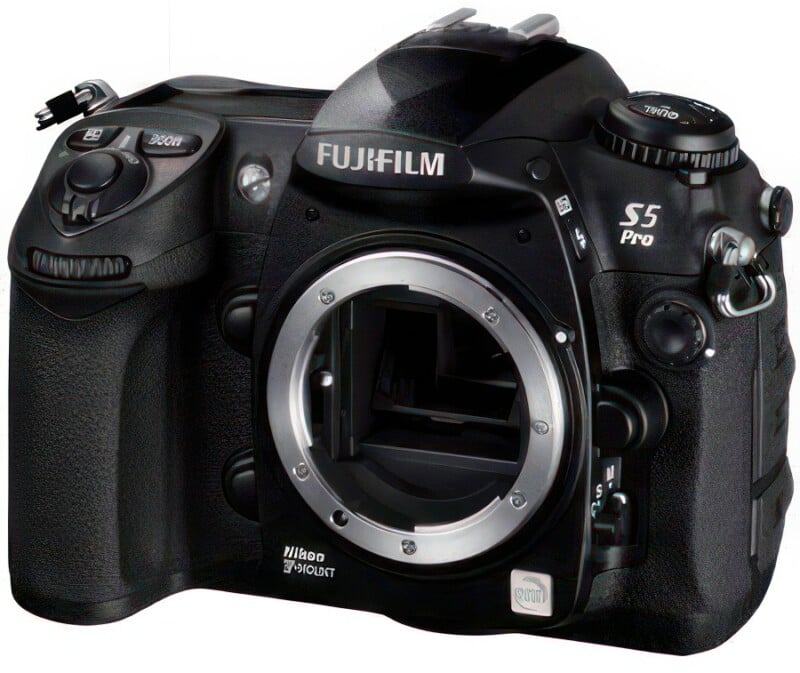
The last model, the S5 Pro, features the SuperCCD SR II, which generally retains the same design as the sensor in the S3 Pro, while a majority of the improvements in the camera come from the new body (based on the Nikon D200), a native ISO range up to 3200, an option to choose Dynamic Range settings from 100% to 400% (sound familiar?), new film simulations (again, sound familiar?), faster autofocus and higher maximum shutter speed and flash sync, a higher-resolution LCD screen, and even Face Detection technology.
The big thing about Fuji’s SuperCCD technology, especially the SR and SRII sensors, is that it actually works. Not only does the pixel layout result in higher resolution (though not double the resolution that Fuji claimed), but the S3 Pro and S5 Pro sensors, with their dual photodiode design, have exceptionally good dynamic range. In fact, the S3 and S5 Pro cameras topped the DXOMark sensor rankings for dynamic range until the release of the Nikon D3X in 2009 — even besting medium format cameras like the Phase One P45 Plus and Hasselblad H3DII 50 — with a measured 13.5EV of dynamic range.
The technology seems almost like the predecessor to dual gain output sensors, such as those found in Arri Alexas, the Canon C70, and the Panasonic GH6. It would be really interesting to see the design revisited with modern CMOS technology, though I imagine there are design difficulties that would make the honeycomb tessellation complex with BSI CMOS structures.
Sigma Foveon (2002-present?)
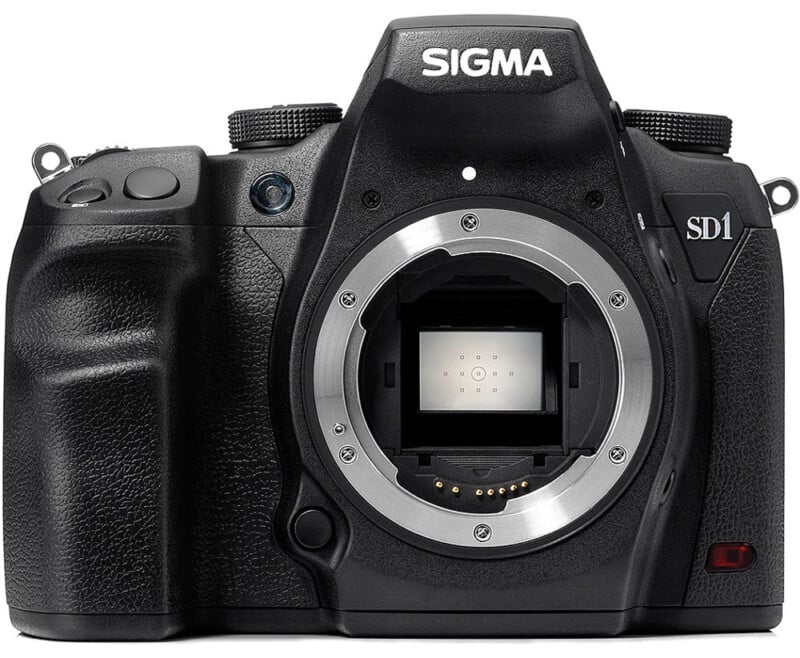
Not too long ago, Sigma — like Tamron, Tokina, and others — was known as a manufacturer of poor/mediocre to sometimes very good third-party lenses. That quickly changed when they introduced their Art line of DSLR lenses, which quickly became known as some of the highest-quality lenses on the market. Their reputation has only continued to grow since then, positioning them as one of the leading optics manufacturers.
But the family-owned company has also made digital cameras for the past 22 years. Not just any digital cameras, though. Fitted with Sigma’s proprietary Foveon sensors, there are no other cameras like them on the market, and almost certainly never will be.
The first camera to launch was the Sigma SD9 in 2002, a DSLR that utilized Sigma’s SA mount (all interchangeable lens Foveon cameras use the SA mount). The SD9 featured a 20.7mm x 13.8mm Foveon X3 sensor, slightly larger than Four Thirds. It produced a 3.43MP image with 10.3 effective megapixels (3.43 x 3).
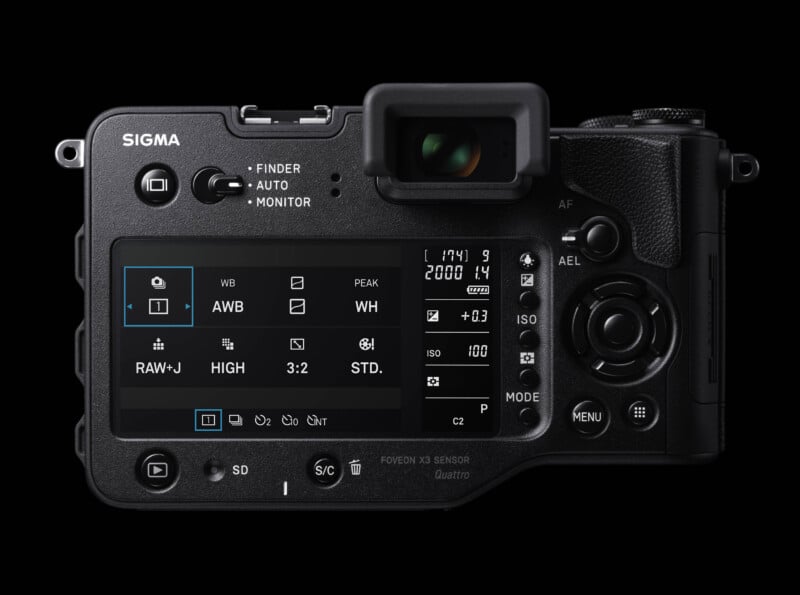
The sensor design is where Sigma took the path less (or never before) traveled. Instead of using a CFA (color filter array), such as in a Bayer sensor where every pixel receives either a red, green, or blue filter, the Foveon X3 design stacks three equal resolution arrays of photosites vertically — blue on top, green in the middle, and red on the bottom, though the most recent Quattro sensor changes this. Because the different colored photodiode layers have different spectral sensitivity, and photons of different colors have varying energy, different colors of light will penetrate the layers to different depths, with some being absorbed sooner. This removes the need for demosaicing, which is a necessary process with any CFA-equipped sensor (Bayer, X-Trans, or otherwise), and can result in false color, reduced detail, and an approximately 50% loss in light hitting the sensor. The Foveon design also yields greater perceptual resolution. In my experience, it’s somewhere about halfway between the actual sensor resolution and what Sigma claims it is equivalent to.
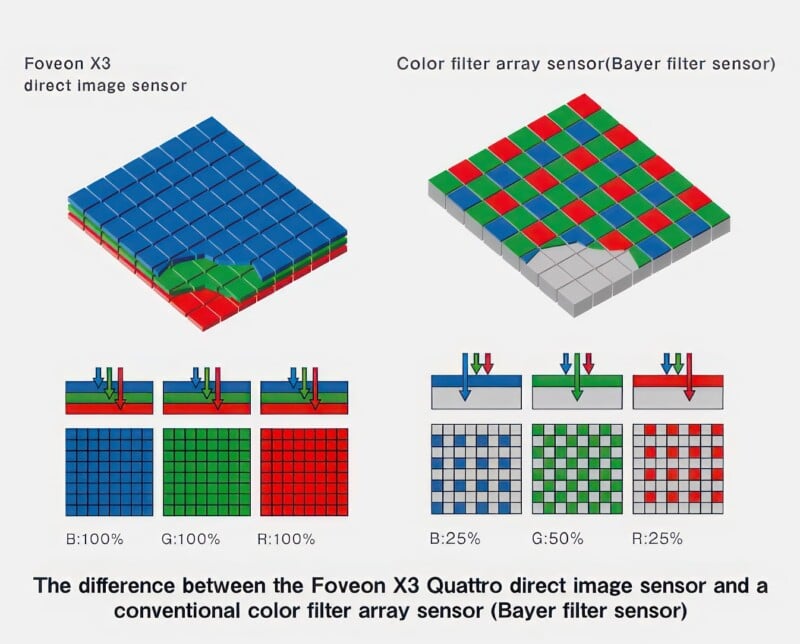
If you were to read Sigma’s marketing material, Foveon would seem like the bee’s knees. And sometimes it is. But it’s still a very niche design because, as it turns out, Bayer CFAs are actually quite good, and the Foveon sensors come with a number of shortcomings with terrible noise performance at higher ISOs. Earlier Foveon cameras were mostly usable only at their base ISO, while the newer Quattros are serviceable up to at least ISO 1600 (especially in black and white).
And yet, Foveon cameras have a massive cult following, with many — myself included — swearing by their image quality potential. I personally have a DP1x and DP2 Merrill, and I hope to get an sd Quattro eventually (I’m kicking myself for not pulling the trigger before they stopped selling them). At base ISO and in good light, the files from the DP2 Merrill rival full-frame and even some medium format in their acuity, and the prints are simply sublime.
The sd Quattro H, released in 2017, was the last Foveon camera released by Sigma to date. It featured a 25.6MP APS-H sensor with 38.6MP effective megapixels, which Sigma claimed was equivalent to a 51MP Bayer sensor.
Despite the seven-year gap in releases, the company has been developing a full-frame Foveon camera (likely to use the L-mount), but that has seen numerous setbacks. But Petapixel boldly predicted earlier this year that the camera will finally see the light of day sometime this year.
I really do hope we are right.
Leica DMR (2003)
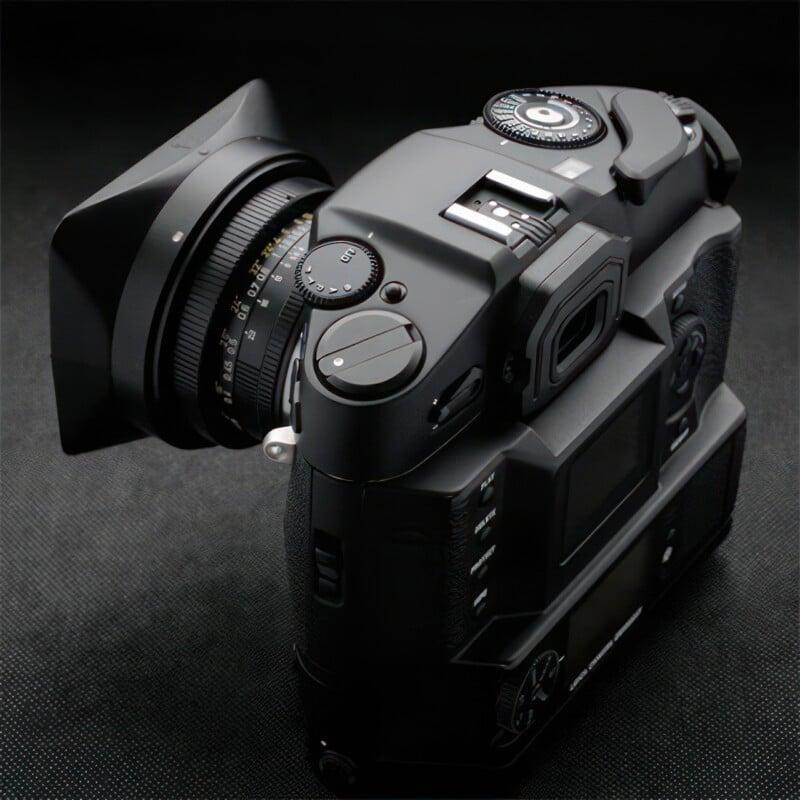
While Leica cemented its name in the history books with its rangefinder cameras, it did produce two SLR systems: the 35mm Leica R line, which started with the Leicaflex in 1964, and the Leica S medium format digital cameras. The R line of cameras moved from the Leicaflex family to the Leica R3 and ended with the Leica R9 in 2002.
In 2003, Leica announced the Digital Modul R (DMR), a module containing a 10-megapixel Kodak CCD sensor developed in concert with Imacon. The module clipped onto the back of either the Leica R8 or R9 — which were designed from the beginning to function with digital solutions in the future — and a power unit was attached to the base of the camera.
Because the Kodak-designed sensor had to be positioned precisely at the film gate, it had to have a smaller area than the 36x24mm dimensions of film. Thus, it had a 1.37x crop factor — slightly more than APS-H — with a sensitivity ranging from ISO 100 to ISO 800. An anti-aliasing filter was omitted from the sensor to increase pixel acuity.
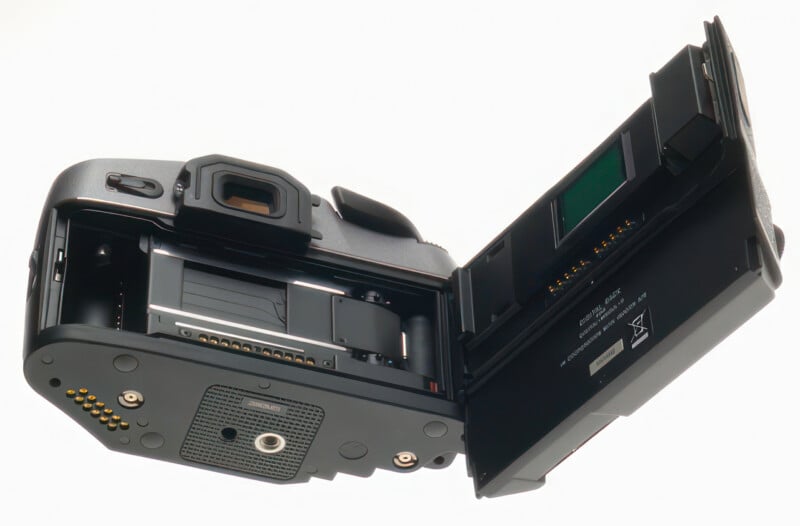
The resulting digital camera was surprisingly smooth in its function and ergonomics. A small LCD on the rear was used for the menu, playback, and all the typical settings we’re used to today. A smaller screen below the main LCD would display basic information — ISO, exposure compensation, battery level, white balance, etc. Exposure mode, shutter speeds, and exposure compensation were all set via the regular controls on the top of the body, just as they were when using the camera with film. Naturally, the camera utilized Leica R lenses, though compatibility was limited to 3-Cam, ROM, or earlier lenses that had been modified with the proper cams (or converted to ROM).
The DMR was discontinued in 2007 after selling only 2,200 units. Leica planned to produce an all-digital Leica R10, but such plans never came to fruition.
The Leica R8/R9 with the DMR remains the only hybrid film/digital 35mm camera ever made.
Seitz 6×17 Digital (2006)
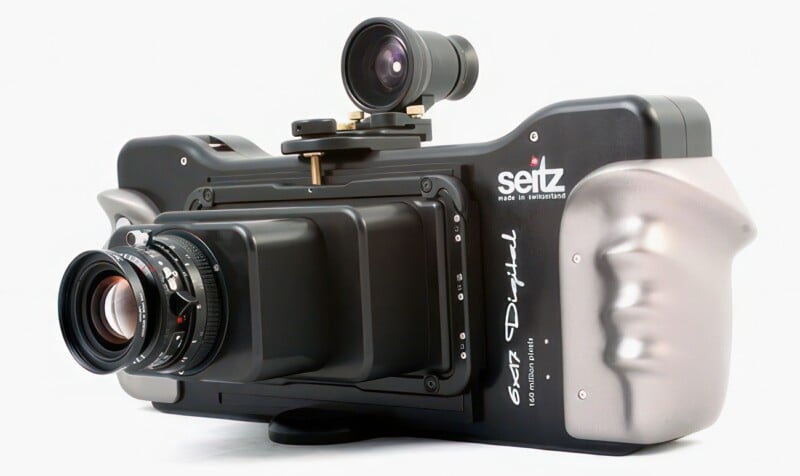
Founded in Switzerland in 1955 by Hermann Seitz, Seitz was a manufacturer of panoramic cameras, originally using a mechanism that swiveled the camera. Eventually, superior electronic features were developed in place of that design, and in 2006, the company departed from its rotating cameras to a digital camera with an ultrawide sensor: the Seitz 6×17 Digital.
Specifically, the camera was fitted with a 170mm x 60mm custom-built Dalsa sensor housed inside the new Seitz D3 sensor back, with a horizontal and vertical resolution of 21,250 x 7,500 pixels, respectively, for a total of 160 megapixels. Despite the enormous resolution, the similarly gargantuan sensor size meant that each pixel was still a girthy 8 microns.
Not surprisingly, this was a scanning sensor, meaning that it does not capture an image all at once, but rather by physically moving a trilinear CCD sensor across the entire plane as it reads out one line at a time. And, the entire time this is happening, the “exposure” is still occurring — it may only be 1/8,000 per line, for example, but until every line is read, any changes in light will affect the final image. Furthermore, as exposure time increases (gets longer), so does the readout time. The Seitz 6×17 debuted with one of the fastest scanning sensors ever, if not the fastest, with the ability to read out a 1/20,000 exposure in one second. But what if you need a 1/500 exposure? Well, that’s going to take 40 seconds to scan. A half-second exposure would take a whopping 2.8 hours. You can, however, alleviate this somewhat thanks to the camera’s relatively generous (for such a large scanning back) ISO range from 500 to 10,000.
But it certainly isn’t all doom and gloom. Image quality from scanning backs is incredible. Due to the trilinear CCD design, each pixel is sampled with separate measurements for red, green, and blue, resulting in true color at each photosite. It also means there is higher overall pixel acuity because no interpolation is necessary, such as in the case of a Bayer sensor.

The result? 160 million pixels in a 1GB uncompressed 48-bit TIFF file (16-bit raw was also available) with no false color, no light fall-off or color cast due to wide-angle or perspective correction lenses, extremely high spatial resolution, and excellent dynamic range (Seitz rated the camera at 11 stops).
The physical design was rather stylish, with two contoured hand grips at each end, the D3 sensor cassette on the rear, the lens on the front, and an optical viewfinder above that. An optional touchscreen control device (a Sharp Zaurus) could be attached to the rear or used wirelessly to adjust camera functions. The large files were transferred via gigabit ethernet to a portable storage drive, which was actually a Mac Mini with an Intel Core Duo processor, 2GB of RAM, and Mac OS X.
A wide variety of lenses could be used — Seitz recommended using Schneider or Rodenstock lenses, but other large format lenses such as Nikkor and Fuji could also be utilized without restrictions.
Physically, the camera measured 19.5 inches in width, 6.9 inches in height, and 3.75 inches in depth, and it clocked in at 6.2 pounds (2.8 kilograms) without accessories or lens. It certainly wasn’t a camera you took out on your morning walk, but there’s no doubt it attempted something bold, and the results were reportedly undeniably fantastic.
It’s unknown how many actually sold.
Ricoh GXR (2009)

In November 2009, Ricoh announced a very unconventional digital camera system — the GXR. As we all know, all non-medium format ILCs on the market feature a fixed sensor and swappable lenses. The GXR takes virtually the opposite approach: a body (featuring a grip, pop-up flash, hot shoe, LCD screen, and all the buttons and dials) is mated with an interchangeable “unit,” each of which contains a unique sensor, processor, and lens (or lens mount, in one case). While the GXR “body” itself has no viewfinder, Ricoh did offer a hot shoe-mountable external EVF.
First, there was the Ricoh GXR A12 50mm, which featured a 12MP APS-C CMOS sensor and a 33mm f/2.5 macro lens, yielding a 50mm FF-equivalent focal length. Announced alongside that was the S10 24-72mm module, which housed a 10MP Type-1.7 CCD sensor and a 24-72mm (FF-equivalent) f/2.5-4.4 lens. Both of these are fitted with leaf shutters, and the GXR S10 contains sensor-shift image stabilization.
In 2010, Ricoh rolled out the GXR P10 28-300, which contained a 10.6MP Type-2/3 BSI CMOS sensor and a 28-300mm (equivalent) f/3.5-5.6 lens. Later the same year, the A12 28mm F2.5 was released, featuring a 12-megapixel APS-C CMOS sensor and a 28mm (equivalent) f/2.5 macro lens.
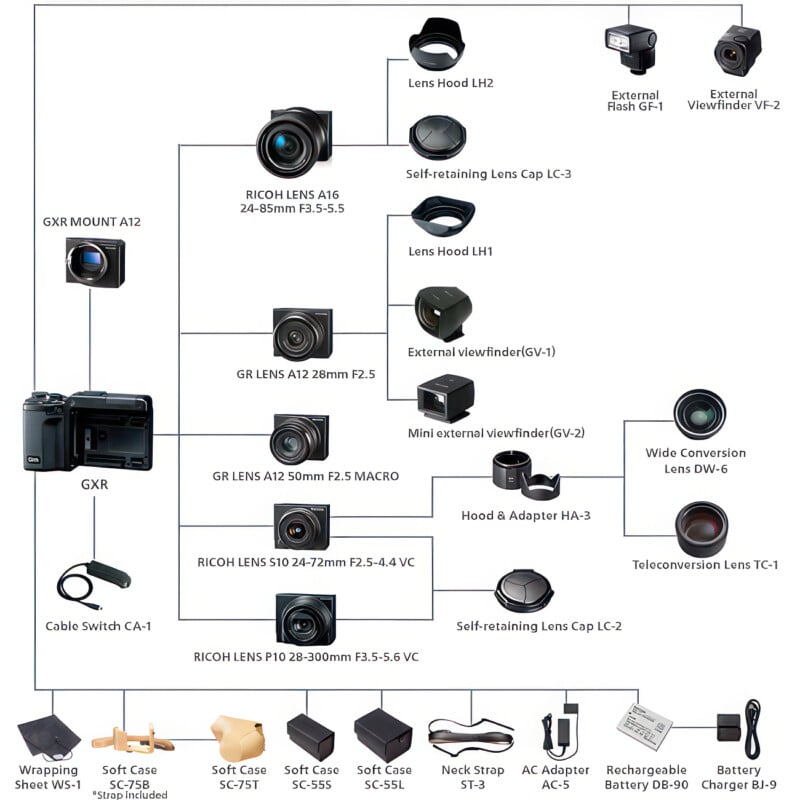
In 2011, Ricoh debuted the GXR Mount A12, which contained the same 12MP APS-C sensor as prior units, but eschewed a lens in favor of a Leica M mount. Not only did this unit allow for interchangeable lenses, but the sensor was specifically designed to work well with rangefinder lenses — specifically wide-angle rangefinder lenses — by using thinner cover glass and offset microlenses. This makes the GXR one of the few non-Leica cameras with that distinction.
Last but not least was the GXR A16 24-85mm unit. It boasted a new 16.2MP APS-C CMOS sensor, an upgraded imaging processor, and a 24-85mm (equivalent) f/3.5-5.5 zoom lens.
It’s impossible not to admire the audacious approach Ricoh took with the GXR line, even if it didn’t exactly pay off for the company. Modular digital cameras have existed since the beginning of digital photography, with most medium format cameras using a digital back — which contains the sensor and image processor — in tandem with a separate body. However, the GXR was the first to bring it down into consumer territory.
And it wasn’t simply a gimmick. While some of the sensors were underwhelming, all of the lenses were fantastic. By integrating the lens and sensor into a single block, Ricoh was able to optimize their designs to suit one another perfectly, not unlike any fixed-lens camera on the market today. And the GXR Mount A12 was a particularly innovative concept, though it may have been more popular had it featured a full-frame sensor or if it had just been its own dedicated rangefinder-style camera.
The GXR was probably too weird for its own good, and the naming scheme certainly didn’t help. Nonetheless, I wish more manufacturers took such big swings, even if this one struck out in the end.
Aaton Penelope Delta Cinema Camera (2010)
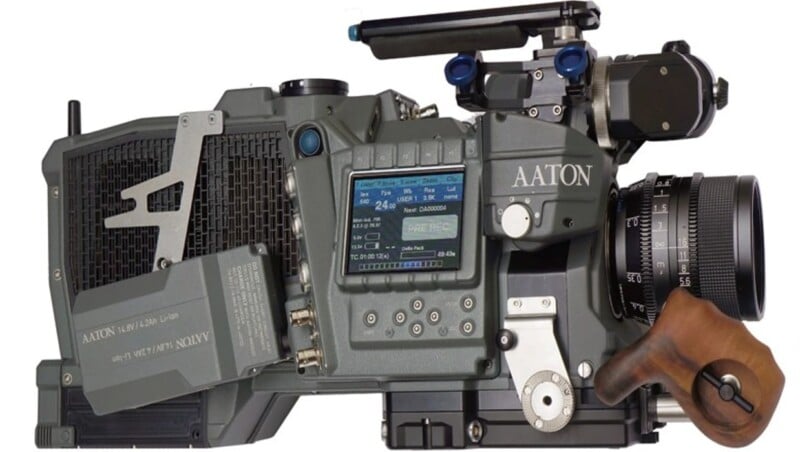
This one isn’t a stills camera like all the others, but given the hybridization of just about every camera on the market, I think the incredibly interesting technology in this one is worth looking at. In fact, the Aaton Penelope Delta contains some of the most interesting technology I’ve ever seen in a digital cinema camera.
Aaton was a French motion picture equipment manufacturer founded in 1971 with a specific focus on quieter, more portable cameras. The original Aaton, created by engineer Jean-Pierre Beauviala, pioneered timecode on the film negative — a revolutionary feature at the time. For decades, the company’s cameras were the choice of cinematographers who wanted to shoulder-mount the camera; while not unusual now, Aaton’s “cat on the shoulder” design was singular for many years.
Aaton’s 16mm and 35mm models have been deployed on hundreds of prominent films over the years — the Aaton 35-III was used on Ridley Scott’s Gladiator and Christopher Nolan’s Insomnia, while the Aaton XTR Prod Super 16 shot sections of BlacKkKlansman and City of God. The Aaton Penelope — the 35mm predecessor to the digital Penelope Delta — was responsible for almost all of The Fighter, Sound of Metal, and many portions of Captain Phillips and First Man. Needless to say, Aaton’s reputation was stellar.
The 35mm Penelope, launched in 2008, was created with the future development of a digital version in mind. The idea was to replace the 35mm film magazine with a “digital magazine,” but this never came to fruition. Instead, the company unveiled the Aaton Delta Penelope at NAB in 2010. Its base specifications were respectable: a 3.5K Super 35 format Dalsa CCD sensor (Cinematographer John Brawley has a great write-up about the camera’s CCD sensor), internal 16-bit uncompressed raw onto SSDs, 14 stops of dynamic range, a large screen on the side, and Aaton’s trademark shoulder-formed design. But it’s on the inside where things get interesting.
First, the Delta Penelope incorporates a mechanical shutter in addition to the sensor’s electronic shutter. While rare, the Sony F65 and Arri Alexa Studio also feature mechanical shutters. Like those cameras, this allowed the Penelope Delta to use an optical viewfinder. Unlike those cameras, the Penelope could switch from the traditional rotary-style shutter to a variable slit (“multi-slot”) design. By doing this, the mechanical shutter could actually allow the user to reduce the sensor’s sensitivity from its native ISO of 650/800 to about ISO 80/100. And no, this does not change the shutter angle (though the mechanical shutters can also do that).
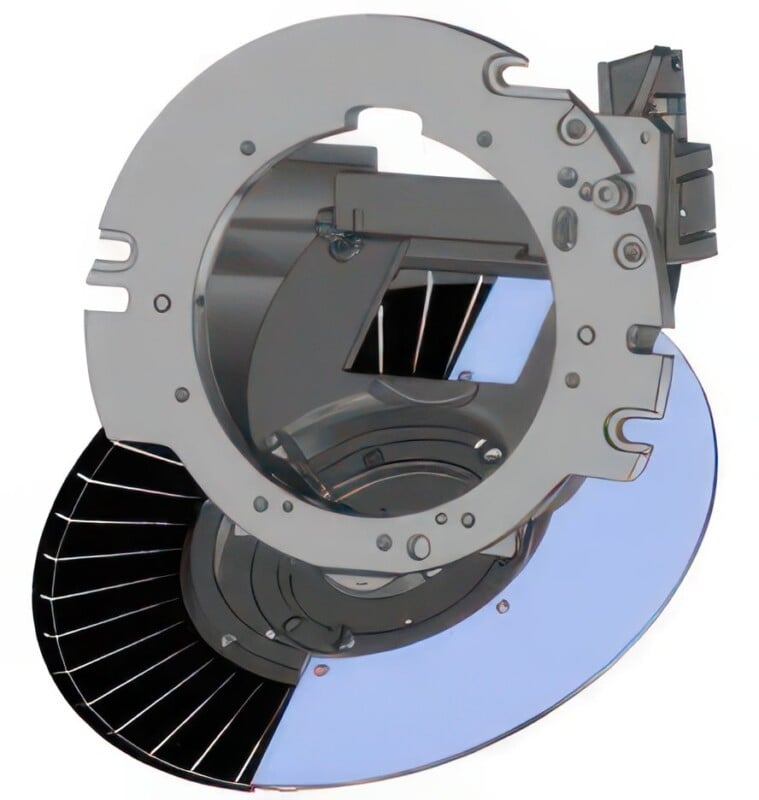
Next up is maybe the most exciting feature I’ve seen in a cinema camera: pixel shift video. While every major stills manufacturer offers sensor-shift multishot modes at this point, they do not work in video mode, nor have they ever — except in the Penelope Delta. When this mode is turned on, the sensor — which is mounted to a block with very precisely milled tracks (pixel shift in stills cameras uses the magnetized IBIS) — oscillates exactly half a pixel every frame.
The benefits were numerous — the slightly offset frames worked to randomize the noise, which more closely mimics film grain, overcoming the common (especially at the time) issue of fixed-pattern noise in digital sensors. The sensor shift also increases the temporal resolution of the image over time; while each individual frame would still only be 3.5K, when in motion the footage would resolve about 7K.
Unfortunately, the camera’s Dalsa sensor was not only its downfall but the entire company’s. IN 2013, Beauviala announced that Aaton was declaring bankruptcy in order to find investors because of defects with the Penelope Delta’s sensors. Aaton was acquired several months later, but Beauviala exited the company later that year. Today, the once legendary cinema camera manufacturer focuses on digital audio recording.
(For a wonderful and detailed dive into the story of the Aaton Penelope Delta, check out Frame Voyager’s Abandoned Camera series video)
Lytro Illum (2014)

Two years after it began shipping its first-generation light field camera — an odd duck that resembled a tube of lipstick — Lytro announced the Illum, a light field camera that captures both the intensity and direction (or angle) from which the light rays are traveling. Compared to traditional imaging sensors, which only collect information about light intensity, this allowed the Illum to essentially freeze an image in 3-dimensional space, complete with a spatial understanding of where everything in the frame is located. All of this enabled the camera to record what Lytro called “living pictures.” Once rendered into a 2D space — generally a computer monitor — these “living pictures” could then be “refocused,” and the depth of field could be adjusted. Basically, the camera allowed for focusing after the fact, as well as variable depth of field.
The Lytro Illum featured a Type-1 size sensor with 40 megarays of angular resolution — roughly equivalent to about 5 megapixels of spatial resolution. In front of the sensor was a non-interchangeable 30-250mm full-frame equivalent lens with an impressive constant f/2 aperture. Unlike a conventional camera, this doesn’t affect depth of field but instead allows the camera to gather more focus depth information. If a 30-250mm (equivalent) f/2 lens seems a little too good to be true, that’s because it kind of is. Because the Lytro can map the direction of every ray of light, it is able to rearrange the light rays into the proper order rather than relying on advanced optical corrections, which are what make traditional camera lenses large, heavy, and expensive. Basically, if you were to stick this lens in front of a conventional imaging sensor, it would be garbage.
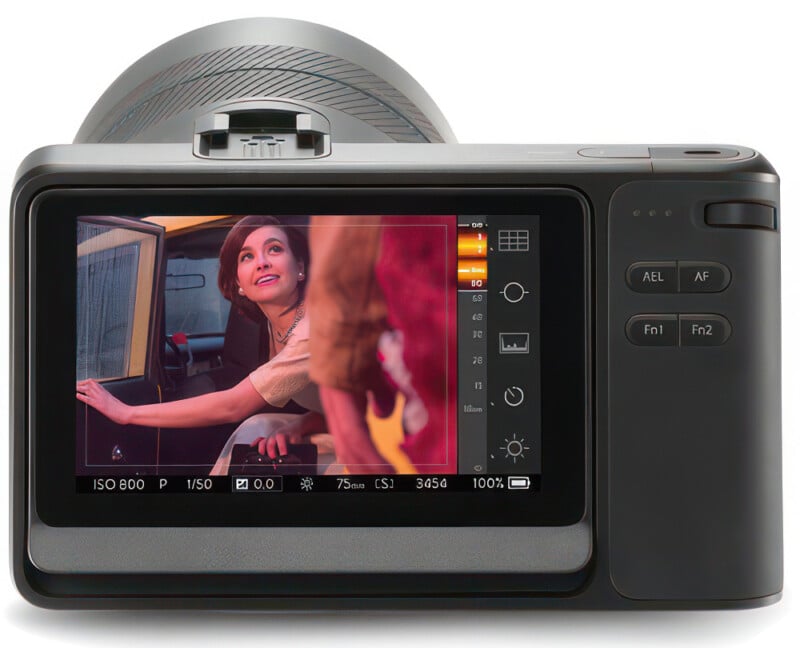
The physical design of the camera was actually very sleek — I never got to hold one, but I can’t say it doesn’t look pretty damn cool. There are a sufficient number of physical controls, including a front and rear control dial, but the star of its design is the large 4-inch articulating touchscreen via which the Android interface would be controlled.
Originally sold at an MSRP of $1,500, the Lytro Illum was selling for as low as $400 only one year after its release. The year after that, in 2016, CEO Jason Rosenthal announced that the company would be pivoting toward VR, citing that light field cameras “had a number of disadvantages … including 4X larger file sizes and lower resolution compared to other similarly priced cameras. The cold hard fact was that we were competing in an established industry where the product requirements had been firmly cemented in the minds of consumers by much larger, more established companies.”
In 2018, rumors emerged that Google was set to acquire Lytro, but that never materialized. Instead, the company shuttered, though many of its employees transitioned over to Google, presumably to work on virtual reality technology.
LargeSense LS911 (2018)

If you thought the sensor of the Seitz 6×17 was big, this next camera has one that positively dwarfs it. Boasting the largest sensor currently available on the consumer market, the LargeSense LS911 features a gargantuan 9×11-inch (229x279mm) imaging sensor — 74 times as large as a traditional full-frame sensor in area. Unlike other extremely large sensor cameras, the LS911 uses a CMOS rather than a scanning sensor. This is about as serious of a camera as it gets, resulting in an experience that nothing else can give you.
![]() The massive piece of silicon sports 12 megapixels of resolution (3888×3072), which results in some very fat 75-micron pixels. Currently offered only with a monochrome sensor, the camera has a very high base ISO of 2100 and a maximum of ISO 6400. Photographs can be saved as DNG raw, 16- or 32-bit TIFF, and JPEG, either to a CompactFlash or SD card or to the camera’s internal 900GB storage. Attaching an external drive via a USB 3.1 port is also an option.
The massive piece of silicon sports 12 megapixels of resolution (3888×3072), which results in some very fat 75-micron pixels. Currently offered only with a monochrome sensor, the camera has a very high base ISO of 2100 and a maximum of ISO 6400. Photographs can be saved as DNG raw, 16- or 32-bit TIFF, and JPEG, either to a CompactFlash or SD card or to the camera’s internal 900GB storage. Attaching an external drive via a USB 3.1 port is also an option.
While the sensor is achromatic, the LS911 does have a nifty integrated feature to produce color images via a 3-shot system using color filters.
One of the most surprising specifications is how quickly the LS911’s enormous sensor can read out — 1/26s, which means the electronic shutter can be operated up to that speed. And, perhaps even more impressively, the LS911 is capable of recording 4K uncompressed video at up to 26fps.
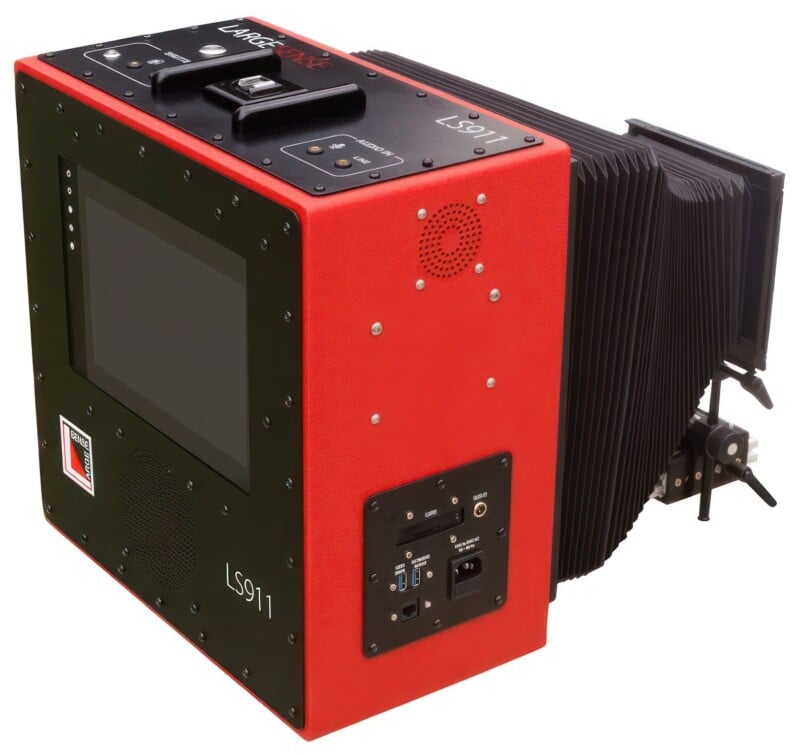
LargeSense unveiled the LS911 in 2018 for $106,000. It is no longer available to purchase new because, according to the company’s website, LargeSense is currently in the process of developing the LS911 Mark 2, which will be a “digital back in two parts” and feature a resolution of 26 megapixels. Unlike the current LS911, which is a wholly integrated camera, the LS911 Mark 2 will be a digital back.
The California-based company does, however, currently sell the smaller LargeSense LS45 — a 6.7MP digital back fitted with a 4.7×5.5-inch achromatic sensor.
